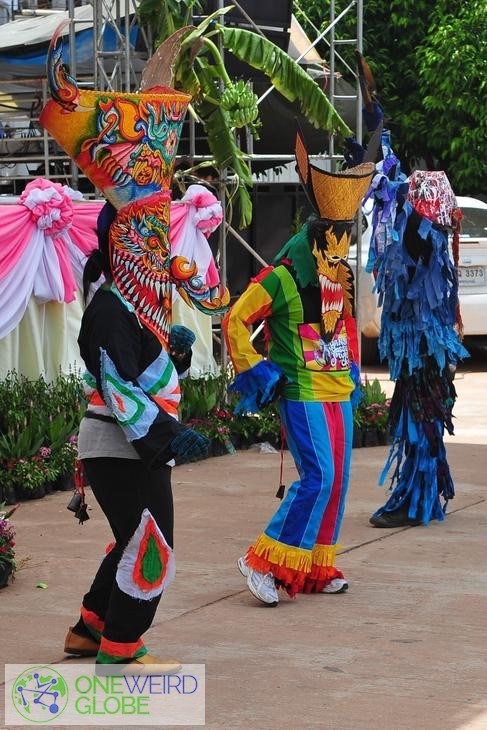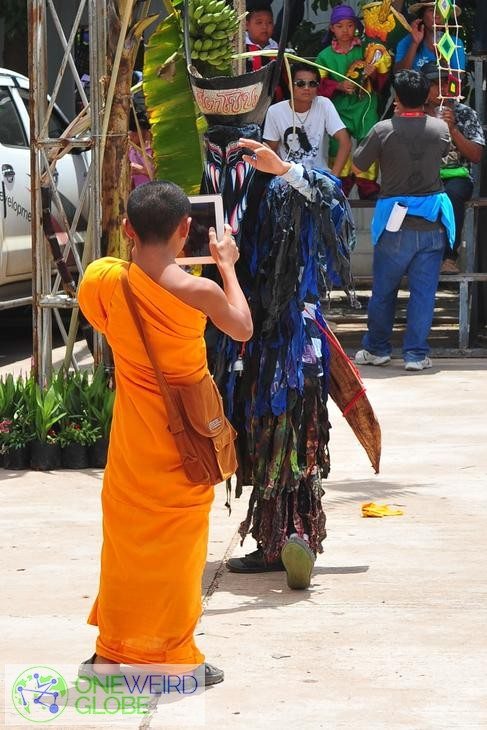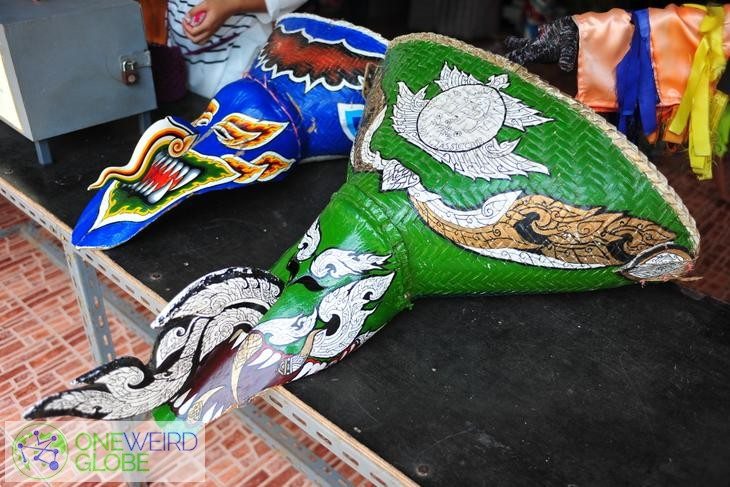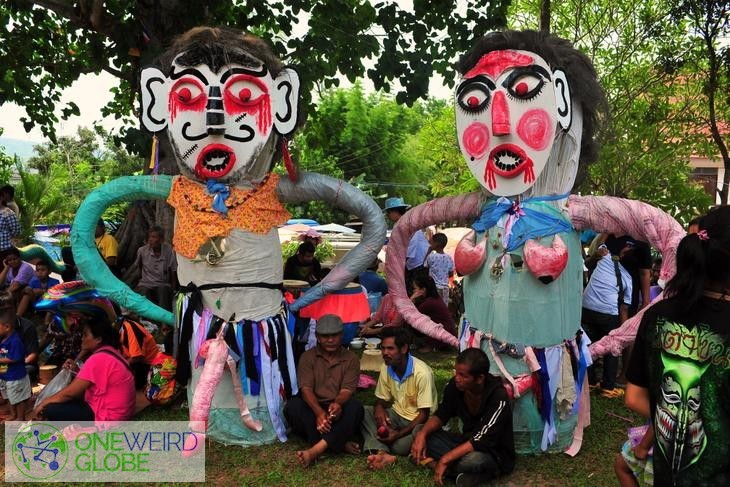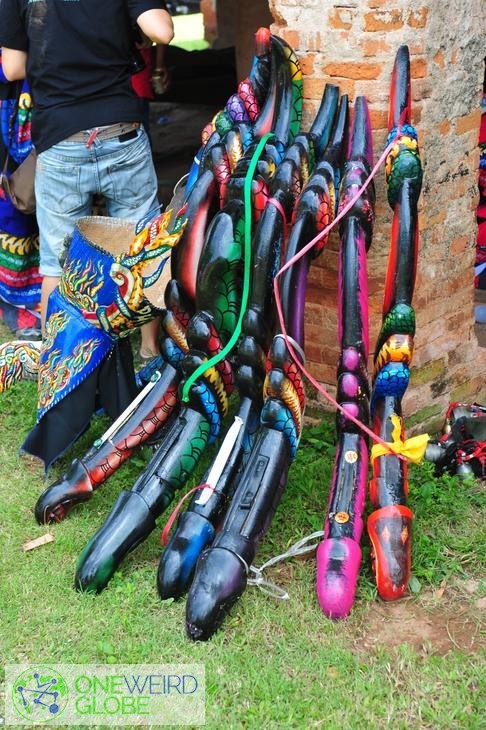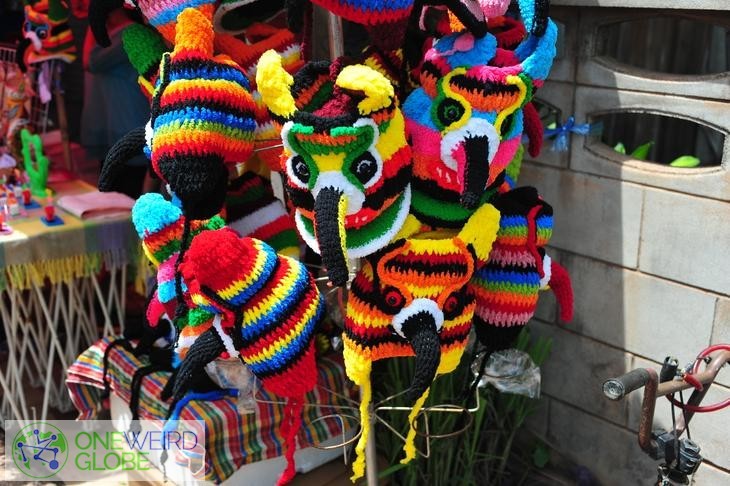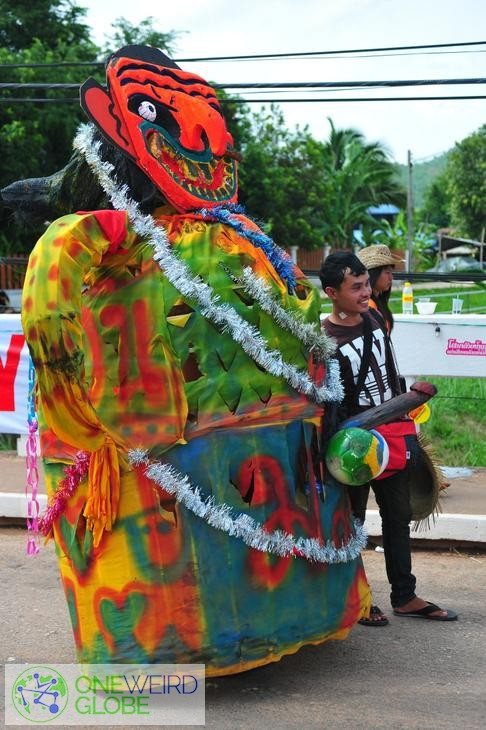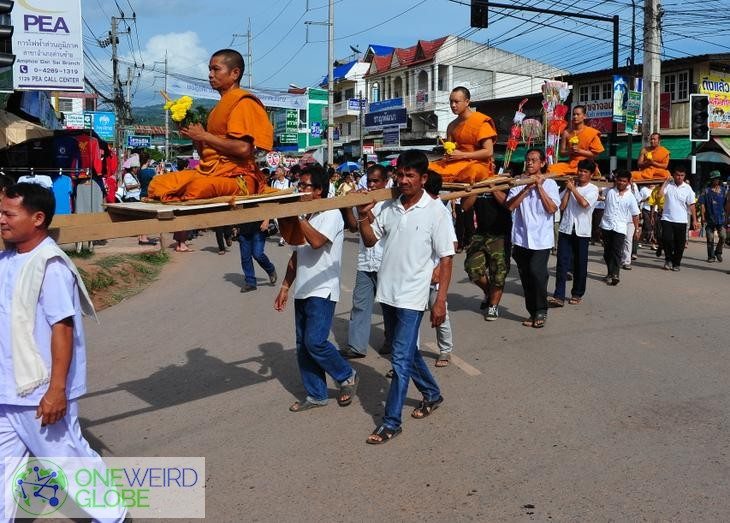Described as a bawdy rainmaking festival, the Phi Ta Khon (also spelled Pee Ta Kon) is an annual three-day festival in the tiny town of Dan Sai in northern Thailand. While there’s plenty of religious significance to the events, the bewildered tourist will find precious little sign of it on-site itself, so let’s start with some context.
Read the post first, or watch the video! (while there are plenty of kids seen at the festival, you might want to put your own away if you don’t want them to see wooden phalluses.)
This is one of the only festivals in the world where the exact date is determined by a maw duu, a medium or shaman, not the cycle of the moon or the local tourism board. (Supposedly, the local tourism board isn’t in on the date until it’s actually decided, though of course there’s no way to confirm that.) Each day of the three-day festival ends up being like an act in a play or movie.
At 3:30am on the first day, the village elders and the powerful shaman (Jao Paw Guan) head to the Mun river (also spelled Muan or Moon River, after the Andy Williams song). They pray to Phra U-pakut, the spirit of the river, for protection from the ghosts that are to come out and play. By noon, the group has moved from the river to the temple (Wat Phon Chai), then to the shaman’s home. There, his wrists will have hundreds of white threads signifying the communal goodwill of the village to fight off the ghosts. From there, he and his assistants head out as the town is taken over by ghosts. The rest of the first day passes with parades of ghosts, mudmen, bells, and of course, phalluses. What’s a good agrarian fertility festival without wooden penises a couple feet long? Call them palad khik or balad kik if you want to make a local smile.
Day two features plenty of parades, costumes, mudmen, and dancing. While there are supposedly aspects of the rocket festival (Bun Bang Fai) also around, we were too caught up in things to see or hear anything rocket-related. These celebrations begin at dawn, and even by 3pm you could tell people were beginning to drift away as the sun and alcohol took effect.
It’s day three that brings back our man Jao Paw Guan and the supernaturally powered monk, Phra U-pakut. Apparently, he’s reached the state of existence where he transformed himself into a white pebble. Most of the year, he lives peacefully in the river – once a year, though, he’s summoned by Jao Paw Guan to drive the demons back to the underworld. The ghosts begin shedding their masks and costumes into the river (although today, most end up being neatly stored away for next year), and people settle in to hear 13 Buddhist sermons, including the Great Birth Sermon.
In short, buckle up Dorothy – you ain’t in Kansas anymore.
Arriving means navigating the hoards of people looking to get pictures with these colorful creatures. They’re friendly ghosts, and will pose by themselves or with others if they’re not getting into mischief…
A couple of the colorful masks.
Head to the Phi Ta Khon Mask Museum on the temple’s grounds for a bit more context – and maybe a bit of breeze. The smaller English panels explain a bit more of the festival’s context and the city’s history.
Let’s not forget about the mudmen, who represent the fertility of the rice paddies by covering themselves in mud.
When not being worn or paraded about, the figures make excellent displays.
A few of the sticks carried – note the bulbous no human could ever hope to, erm, yeah. These comes in all shapes, sizes, and colors – the more you look for them the more you’ll see.
A curious sight – these colorful knitted hats might be appropriate for a cold winter… but definitely not when the sun blazes with a 35 degree high.
Balls. There, I said it.
No, ladies and gentlemen, that is not a giant matchstick. Again, friendly ghosts willing to pose for photos – including selfies.
As the festival wore down and we were getting ready to leave, yet another parade stopped us. This was at least the third quasi-organized parade of the day, two of which seemed to be happening while traffic tried to flow past!
To be clear, there’s precious little English around, and I’m thankful to have found a few pages that explained the festival in greater detail.
If you’re planning to attend, it’s usually (but not always!) in June or July – more precisely, the first weekend after the 6th Full moon of the year. This isn’t a guaranteed thing, so check in advance before making your travel plans. Staying overnight in Loei or one of the resorts along the way is better than trying to get a room in Dan Sai itself.
Like this post? Like the Facebook page!
Name: Phi Ta Khon (the Ghost Festival – called ผีตาโขน in Thai) – all the festival action is centered around Wat Phon Chai
Address: near the intersection of route 2013 and 2114, Dan Sai District, Loei Province (GPS: 17.274468, 101.149049)
Directions: Dan Sai is about 85km east of Loei city – give it about 1 1/2 hours worth of driving. It’s almost straight shot heading east on route 203 – you’ll need to stay straight on route 2013 instead of turning left to stay on route 203. When it’s festival time, just follow the crowd. Hours: around 7am-5pm. Earlier is better, though – vendors were already packing up at 3pm.
Admission: free
Phone: 0 4281 2812 (Tourism Authority of Thailand – Loei office)
Website: http://www.tourismthailand.org/Loei
Ratings out of 5 globes (How do I rate destinations?)
Ease to arrive:
Foreigner-friendly:

Convenience facilities:
Worth the visit:

